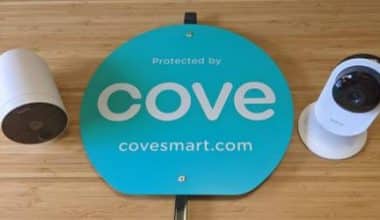So you want to build a high-performance drone that can lift heavy payloads or capture stunning aerial footage? Choosing the right components is key for getting top-notch results. This guide will walk you through everything you need to know to pick out parts for a custom drone build aimed at peak efficiency.
Whether you ultimately decide to construct your drone from scratch or opt for an off-the-shelf model, understanding how various elements like motors, batteries, and flight controllers affect performance helps inform smart purchasing decisions.
Equipped with this knowledge, you can better evaluate manufacturer claims and narrow selections tailored to your specific needs – be that lifting a NW Blue Drone with a 5KG payload or capturing buttery smooth 4K video.
Frame and Structural Components
The frame and structural components make up the physical foundation holding your drone together. This includes the chassis or base plates, arms, landing gear and other structural elements.
Materials
Constructing a frame out of carbon fiber leads to an optimal balance of strength and low weight. The natural rigidity of carbon fiber resists vibrations that could throw off aerial photography. Plastic frames work well for smaller builds but lack the durability for larger drones.
Ultimately, matching your frame material to the size of the build and intended purpose helps optimize cost, durability and efficiency.
Propulsion System
The propulsion system supplies the thrust keeping your drone in the air. Fine tuning this area offers the greatest potential control over flight characteristics and lift capacity. And if you’re interested in drone racing, propulsion is obviously important.
Brushless Motors
Brushless motors dominate the high-end drone market thanks to their superior power, longevity, and efficiency compared to brushed alternatives. Two key specifications to understand when selecting brushless motors are KV rating and size.
KV rating denotes the number of RPMs per volt supplied. Generally, lower KV equals more torque and higher KV provides more speed. Larger drones require motors with more torque to spin bigger props, so look for low KV around 300-900 RPMs/volt. Smaller builds employ higher KV motors in the 1500-3000 RPM/volt range.
Size measures stator width x rotor height in mm. Wider motors generate more torque while taller ones allow bigger props. If building a workhorse to lift heavy loads, prioritize torque with widths from 28-35mm. For agile racing drones, smaller 22-27mm sizes suffice.
Matching your desired flight characteristics and drone size with the appropriate brushless motors keeps your build safe in the air.
Electronic Speed Controllers
Electronic Speed Controllers (ESC) send power from the battery to each motor and allow adjusting rpm. Make sure your selected ESCs can handle the current demands of your particular motors and battery voltage. Higher voltage systems generally provide more power but require appropriate ESCs.
Propellers
The propellers generate the actual thrust to lift your aerial vehicle. Two numbers describe key properties.
The first two digits give the propeller diameter in inches. A bigger number equals a bigger prop.
The second two digits denote pitch measured in inches. Pitch reveals how far a propeller would travel forward through the air with one full revolution. So higher pitch yields more thrust per rotation.
Flight Controller and Sensors
The flight controller board serves as the information processing brain of your drone. It houses sensors and runs firmware guiding autonomous flight capabilities.
Flight Controllers
Flight controllers come in varieties supporting either open source or closed source firmware. Open source firmware like ArduPilot offers full customization and transparency for maximum control. Closed source options feature proprietary code granting the manufacturer tighter integration at the cost of user adaptability. If tackling an advanced custom build, open source firmware generally works best.
Sensors
Accurate and timely sensor data remains critical for stability and navigation.
GPS modules equipped with M8N u-blox chips provide excellent signal lock speed and location accuracy. This proves essential for waypoint following and safety features like automatic return-to-home.
Accelerometers and gyroscopes detect orientation and motion in all three axes. They feed input to automatically stabilize hovering and trim adjustments negating overcorrections.
Altimeters based on barometric readings prevent dangerous altitude deviations when used in conjunction with accelerometer data.
Cameras and FPV System
Drones supporting photography and piloting via an immersive first-person viewSystem benefit from stabilized camera platforms and low latency video transmission.
Cameras
RGB cameras capture images across the visible color spectrum similar to consumer model DSLRs.
Multispectral cameras contain specialized lenses detecting unseen infrared and ultraviolet light. This allows gathering data on crop health impossible with conventional cameras.
If you’re into creating a photography business and aiming to take professional cinematography or photogrammetry models, a larger sensor camera like a Sony Alpha mirrorless provides maximum resolution and dynamic range.
Gimbals
Gimbals smoothly adjust camera aim in three axes to counteract drone movement and vibration. Brushless gimbal motors maintain position by resisting external forces rather than expending energy to stay oriented. This approach minimizes power consumption while enabling buttery smooth camerawork.
For the best stabilization, a 3-axis gimbal with angled motors works wonders.
FPV System
To see your drone’s perspective in real-time, low-latency video transmission proves essential. An optimized FPV system requires fast 5.8GHz transmission with efficient H.265 or H.264 encoding to minimize lag and maximize range.
Telemetry and Transmitters
Telemetry hardware and RC transmitters facilitate communication between the drone and the pilot.
Telemetry
Telemetry modules feed real time performance data like battery voltage and GPS coordinates from the air to ground station pilots monitoring drone status. This keeps builds safer if any issue arises while also enabling features like autonomous return-to-home.
Transmitters
The remote control transmitter connects wirelessly to a receiver onboard the drone to relay user commands adjusting speed or orientation during flight.
Look for transmitters offering at least 6 channels. This provides room for not only critical pitch/roll/yaw controls but also spare channels for toggling advanced functionality like automatic landing or switching between flight modes.
Power System
The power system provides vital electricity to all electronic components through the flight battery and power distribution board.
Batteries
Lithium polymer (Li-po) batteries dominate small and mid-sized drones thanks to their unmatched energy density per unit of weight. Key specifications for flight batteries include:
Voltage – Higher voltage packs around 22.2V enable faster speed. Lower voltage 14.4V models offer safer operation.
Capacity (mAh) – The maximum charge held. Higher is better for longer flight times.
C Rating – Indicates how much current can be safely drawn from the battery—Multiply C rating x capacity to determine maximum amps supported.
When possible, estimate your craft’s current draw across various activities to pick a battery delivering the overhead needed for your mission profile.
Power Distribution Board
The power distribution board (PDB) routes electricity from the main battery to ESCs, flight controllers, and other components requiring power. Make sure available output channels can support all intended accessories and that PDB voltage matches battery voltage.
Choosing Between DIY vs Pre-Built Drones
With all these interlocking pieces involved, is it best to construct your own drone or purchase a ready-made model? Ultimately depends on your skills and priorities.
Building yourself enables deeply customized results where every component gets hand selected. This provides unparalleled performance potential but also requires technical knowledge and ample research time.
Conversely, off-the-shelf drones feature simplified setup since configuration gets handled by the manufacturer. However, they lack the tailored adaptability of DIY models. Generally pre-builts work well for pilots focused purely on flying rather than constructing.
So if you think lifting a custom-designed NW Blue Drone sounds like your idea of fun, go forth and build! Otherwise, plain old piloting may better serve your needs.
Applications of Drone Technology
Drones find wide application across recreational, commercial, and industrial contexts thanks to their versatility, customizability, and ability to access hard-to-reach places with ease.
In business, common drone uses include:
Infrastructure Inspection – Drones with thermal imaging cameras can survey cell towers, power lines, and pipelines faster, and more safely than human inspectors while also reaching remote areas. This prevents costly outages via early defect detection.
Agriculture – By using NDVI cameras and imaging software, drones pinpoint crop issues down to the plant level, allowing efficient targeted pesticide spraying and watering for improved yields. Some variants can also aerially seed fields or forests.
Security/Surveillance – Equipped special cameras like optical zoom lenses powerful enough to read license plates from 300 feet or detect minute human heat signatures in total darkness, drones provide invaluable intelligence keeping property and borders secure.
Delivery – New drone delivery models offer trailblazing neighborhood shipping for ecommerce, prescriptions and retail items. This also assists disaster relief efforts by transporting essential payloads quickly.
Recreationally, consumer drones encourage cultural creativity and technical learning. From amateur filmmakers capturing jaw-dropping landscape visuals to DIY hobbyists gleaning electronics expertise, drones enrich lives through:
Videography – Ultra smooth 4K aerial footage gives homemade skiing montages, family vacation summaries and real estate listings alike an experiential boost over stationary shots. Compact drones like the NW Blue Drone make such filming widely accessible.
Drone Racing – First-person view (FPV) drone racing immerses participants in pure speed as they whip miniature drones around intricate courses from an onboard camera perspective. The community spurs technical interest helping educate the next generation of engineers.
So whether inspecting towers, delivering urgent medical supplies, gathering agricultural data, filming extreme sports or simply racing friends, drones greatly expand what humans can easily see and do from the skies.
In Closing
Constructing an elite drone with top-notch lift capacity, speed or filming capabilities requires choosing high-end components optimized for your intended purpose.
But armed with an understanding of critical specifications like motor KV ratings, ESC current tolerances, and battery discharge capacities, your insight into part selection will prove invaluable in extracting prime performance from your aerial vehicle.
So whether building from scratch or upgrading off-the-shelf models, apply this knowledge to take your drone aspirations to new heights!






